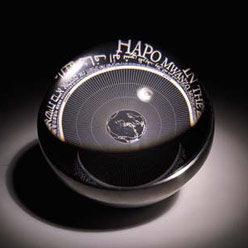This category contains my answers to questions that often come up regarding my book, The Designers Atlas of Sustainability. Recently I released an upgraded version of the book’s teaching guide, prompting Island Press to ask me some questions about the future of sustainable design education.
Q: What is the state of education in sustainable design at the university level?
A: It’s changing quickly. Ten years ago there were few programs that emphasized it, now there are many more. Some programs make it a particular focus, like the BA Product Design Sustainable Futures program where I used to teach (University College for the Creative Arts, U.K.). Other programs are maintaining a more “neutral” overall design focus, but adding individual classes or design briefs, on sustainability. Over the next decade I think we’ll see a lot more change as people gauge the expertise, emphasis and delivery needed for sustainable design.
Q: What’s the difference between green design and sustainable design, and how do these play out in the educational context?
A: “Green” or “eco” design is the practice of reducing or eliminating environmental impacts of design, whereas sustainable design is concerned with the environment, but also with social and economic issues. Design schools that take sustainable and green design to heart will ultimately have to articulate a vision for their program, not only in terms of the expertise they want in the faculty, but also the types of students they recruit and the employment their graduates gain.
what types of students will we recruit?
what skills should they learn?

For example, will your design program turn out business and legislative minded eco-designers that specialize in market competitiveness and compliance? Will it turn out social designers schooled in open source methods to facilitate “co-design” within communities? Will it turn out “service” designers (following the notion of replacing products with services) with special knowledge of hospitality and customer care? Ultimately I don’t think one program could offer all that and do it well. Eventually we’ll see specialties arising, particularly at the graduate level.
Q: What is needed to improve programs in this field?
A: There are a few things we need to think about. First, who can do the teaching? Although many design faculty members are interested and concerned about it, which is great, not many could turn around and deliver an astute, compelling class on it starting next week, the way they might be able to on “human factors in design” or “craft and materials.” A lot of people are now trying to “get up to speed,” and my teaching guide is meant to help that group as well as specialists. My experience is that sustainability isn’t a specialty that you can easily “buy in” to a faculty because for now, there aren’t that many specialists. Schools that invest in helping their faculties become experts will gain a long term advantage as prospective students and the wider economy assign higher value to sustainable outcomes.
Second, where will sustainable design graduates find jobs? Jobs in this field within industry are still relatively rare. That’s partly because many values associated with sustainability, such as social capital and natural capital, are not well reflected in the marketplace. Businesses have difficulty making money from it, so they don’t pursue it. The situation may change with more regulation or consumer pressure. Meanwhile, students who take sustainability to heart, who want to transform our current systems, immediately run up against a resistant industry. Yet there are other career paths for these graduates and we need to suggest more diverse models for design practice, models such as not-for-profit design studios, social enterprises, and public agencies.
Third, how long will it be before students arrive at college with a solid understanding of the ideas behind sustainability? Currently we have to begin at square one in teaching sustainability, which is difficult given the already crowded design curriculum. Over time elementary and secondary schools will probably include more on sustainability. But what message could we send now to prospective students about pre-requisite knowledge?
Q: What are some of the best examples of products that have been designed with sustainability principles in mind?
A: That’s a difficult one (see related post: “Q: best sustainable design examples?“). A design solution may hit the right cultural notes while overlooking significant ecological issues, such as a package design that helps elderly people but performs poorly in ecological terms. In my book I try to provide a framework for thinking about what makes a given example sustainable or not, on ecological, economic or cultural grounds.
Green design gets a lot of coverage, so let me highlight cultural sustainability, especially equity and long term well being. First, there’s humanitarian design work. This ranges from the eco-design housing solutions proposed for survivors of Hurricane Katrina to humanitarian products proposed by Project H Design or Design that Matters. Second, we’re seeing more investigation of design for the long term, from hundreds to thousands of years. An example is the Rosetta Disk, an analog object designed to last 2000 years to record the thousands of languages currently used on earth that are likely to be lost in the next 100 years. Third, fair trade and ethical sourcing are also surfacing more constructively with projects such as Rugmark, an effort to eliminate child labor in rug making, and “fashioning an ethical industry,” aimed at fashion design.
The long lasting Rosetta Disk

Q: Now that many design education programs are making strides toward sustainable design, what is the next big trend?
I think the next trend will be “social innovation” derived from improving our overall social capital (e.g. trust and social relationships). People are recognizing that we actually have a lot of good technology, but we don’t have the social means to apply it well. Energy efficiency is an obvious example; it saves money–yet many organizations aren’t doing it largely due to social and political obstacles.
Social innovation recognizes that even apparently technical and econonmic problems often have social solutions, so it looks to social relationships and social organizations for innovation, as opposed to relying on business and technology. We are already seeing “social enterprises,” organizations with primarily social agendas, oriented toward doing good without losing money, hence “non-loss” instead of “for profit” companiese (see related post “is there a fourth sector“). At the same time there are more new social “tools,” ranging from social networking to open source.
Consumption is a problem that requires largely social solutions

Social innovation poses a real challenge to designers who have traditionally focused on things (consumer goods, buildings) and selling things. I think we are going to see a shift toward exploring how design can facilitate relationships and social capital, perhaps using a “non loss” business model. Sustainable consumption is a good example of a problem that designers can’t solve by creating and selling more things. Consumption comes down to issues of meaning and identity, issues that have to be resolved primarily through social relations, not things. The question is, what kind of training do designers need to understand and enhance social innovation? We are just starting to ask that question now.
I like your Social Innovation insight. Very enlightening.
As a die-hard recycler, I never thought of looking at the effects of insatiable consumption, and a looming obsolescence as a designer for (simply) mass production and selling of stuff. So what if I can design and create something? Why should one buy it? And can I also be wise enough to create something that one can benefit its design and usefulness – but also not laden it with moral and social innuendos that others may avoid it altogether.
I do believe, a lot of people are now very environmentally aware. Sometimes, that alone is inspiring enough for me – when I’m not too caught up with changing the world 🙂
Design activism. I like it. Thank you